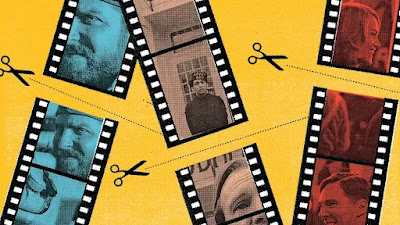What Makes a Hero?
What do Harry Potter, Frodo, and Robin hood all have in common with the heroes of Ancient myths? What if I told you that all variants of the same Hero. Do you believe that?
Joseph Campbell did. He studied all over the world and published a book called "The Hero with a thousand faces". He told dozen of stories and explained how each present hero's journey.
Think of the Heroes' journey as a cycle.

The journey begins in the hero's ordinary world but the Quest passes through an unfamiliar special World along with the key events.
Think about your favorite Book or Movie does this follow this pattern?
1. The call to adventure: This is the initial stage where the hero receives a call or challenge to embark on a journey. This call can come in many forms, such as a prophecy, a dream, or an event in the hero's life that forces them to take action. It can be something that the hero wants to do or something that is thrust upon them. This step represents the hero leaving their normal life and stepping into a new one.
2. Refusal of the call: After receiving the call, the hero may initially refuse to embark on the journey. This is often due to fear or lack of self-confidence. The hero may be hesitant to leave the safety and familiarity of their ordinary world and may need some persuasion or encouragement from a mentor or guide to accept the call.
3. Meeting with the mentor: Once the hero has accepted the call, they will often meet a wise figure who guides and advises them on their journey. This figure can be a person, an animal, or even a divine being. This mentor often provides the hero with tools or information that will help them on their journey and may also act as a father figure or role model for the hero.
4. Crossing the threshold: The hero, having received the advice and tools from the mentor, decides to leave the ordinary world behind and embark on the journey. This is a significant step as it represents the hero's commitment to the journey and the point of no return.
5. Tests, allies, enemies: As the hero journeys, they will face a series of tests, both physical and mental. This step represents the hero's growth and development as they learn to overcome obstacles and challenges. Along the way, the hero will also make allies who will help them, and enemies who will try to stop them.
6. Approach to the inmost cave: As the hero gets closer to the climax of the journey, they will often reach a place that represents their greatest fear or challenge, often referred to as the "inmost cave". This can be a literal cave or a metaphorical one, such as a confrontation with a powerful enemy. This step represents the hero's ultimate test, where they must face their deepest fears and doubts.
7. Ordeal: The hero will experience a crisis or moment of death and rebirth. This is a turning point in the story where the hero will either succeed or fail. It's the moment where the hero will be challenged the most, and where they will learn the most about themselves.
8. Reward (seizing the sword): After overcoming the ordeal, the hero will receive a reward, such as a magical object, newfound knowledge, or treasure. This reward represents the hero's growth and newfound strength and power.
9. The road back: With the reward in hand, the hero must now return to the ordinary world. This step represents the hero's integration of their newfound knowledge and power into their everyday life.
10. Resurrection: The hero will experience a final transformation and be reborn in a new form. This step represents the hero's ultimate growth and development, as they now have the power and knowledge to make a difference in the world.
11. Return with the elixir: The hero returns to the ordinary world and shares the benefits of the journey with others. This step represents the hero's ultimate goal, which is to use their newfound power and knowledge to help others and make the world a better place.
It's worth noting that the hero's journey is a broad structure, and not all stories or myths follow it exactly, but this structure provides a general guide to help understand the underlying.

.webp)


Comments
Post a Comment